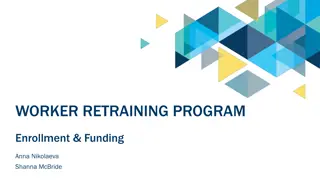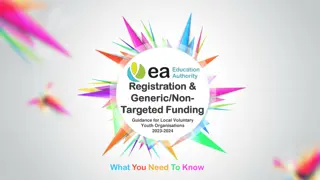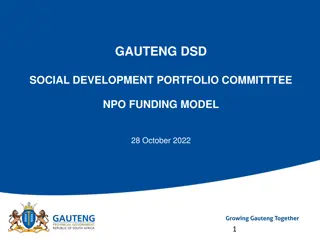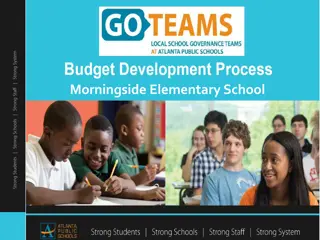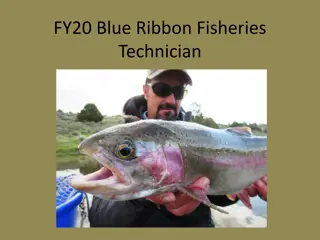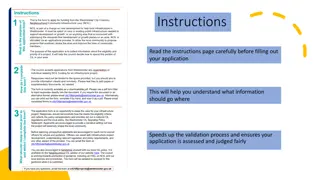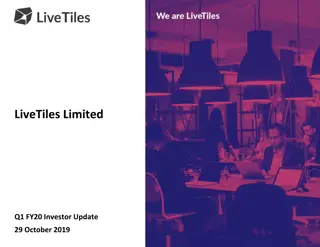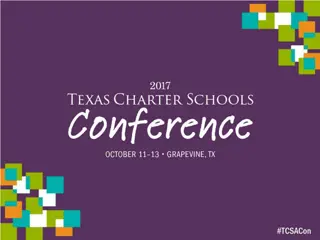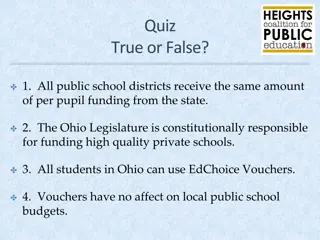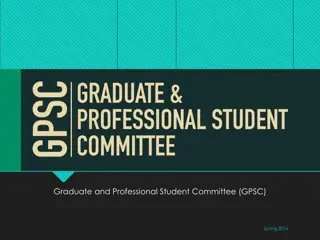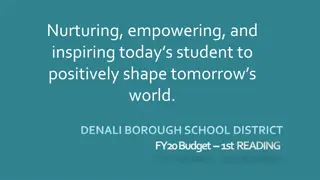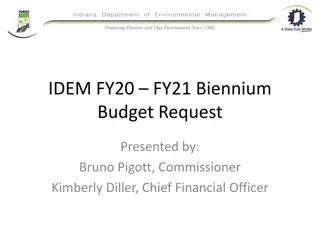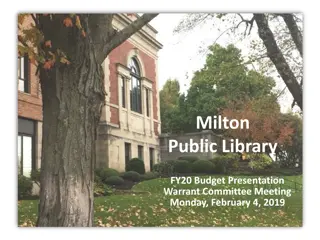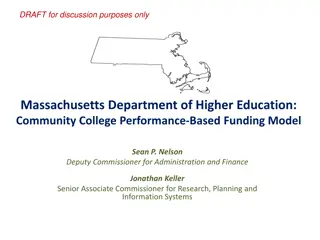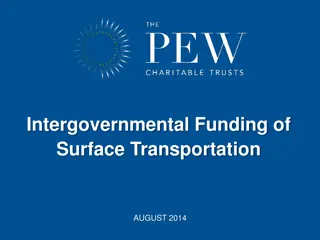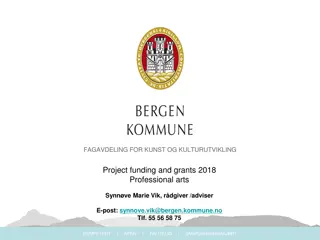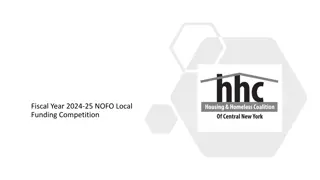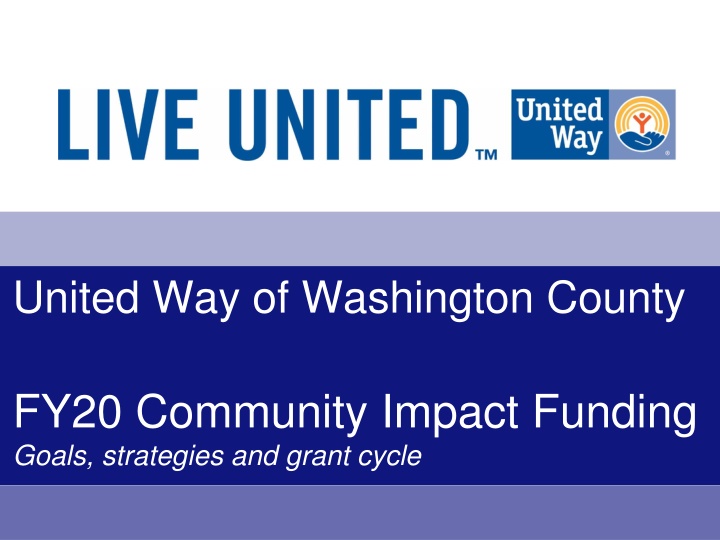
United Way of Washington County FY20 Community Impact Funding Overview
United Way of Washington County is dedicated to improving the community through strategic leadership, collaborative grants, and volunteer-led funding processes. Their focus areas include Health and Basic Needs, with an emphasis on evidence-based programs. Grant awards are monitored closely, with multi-year grants awarded based on performance. The organization strives to tackle community issues and inspire collaborations to enhance quality of life in Washington County.
Download Presentation

Please find below an Image/Link to download the presentation.
The content on the website is provided AS IS for your information and personal use only. It may not be sold, licensed, or shared on other websites without obtaining consent from the author. If you encounter any issues during the download, it is possible that the publisher has removed the file from their server.
You are allowed to download the files provided on this website for personal or commercial use, subject to the condition that they are used lawfully. All files are the property of their respective owners.
The content on the website is provided AS IS for your information and personal use only. It may not be sold, licensed, or shared on other websites without obtaining consent from the author.
E N D
Presentation Transcript
United Way of Washington County FY20 Community Impact Funding Goals, strategies and grant cycle
Agenda Welcome Resources & Communication Grant Cycle Questions
Mission Through strategic leadership and investments, United Way of Washington County will impact community improvement and inspire collaborations.
CONNECTION: Tackle the issues that are negatively affecting our community.
Community Impact Grants Support a network of local human service programs that address community needs in a collaborative manner. Funds raised are invested to improve the quality of life in Washington County. Definition of a Collaborative Application: A single application for a collaborative service effort that is submitted by two (2) or more organizations in which one partner will serve as the Fiduciary Agent. Each partner actively supplies distinctive/separate resources and services, having measurable outcomes and a common goal.
Funding Process The funding process is volunteer-led Board of Directors, specifically the Community Impact Committee, oversees the process Grant Review Teams, composed of volunteers, review all applications and make the funding decisions Criteria is included in the Funding Guidelines
Funding Statement United Way of Washington County, MD will strategically approach the education of our community through funding collaborative and evidence- based programs focusing on Health and Basic Needs as aligned with the UWWC Strategic Plan.
Updates Grant Awards With the FY16 funding cycle, United Way of Washington County, MD implemented multi-year grant awards for Education & Financial Stability focus areas. In FY17, Health awards became multi-year. Basic Needs remains a one year grant. Quarterly Reports continue to be monitored for all grants. Funding is withheld for failure to comply with the grant agreement, which includes meeting stated goals. Multi-year grants will remain the same as grants awarded unless (negative or positive) change in campaign revenue. This will be explained within the grant agreement.
FY19 Updates Grant Awards Education -- 3 Years Health -- 3 Years Runs from FY19 through FY21 Runs FY20 through FY22; Financial Stability -- 3 Years Basic Needs 1 Year Runs from FY18 through FY20 Runs FY20 and continuing on an annual basis
HEALTH Vision, Problem Statement and Goals HEALTH Improving individual and family health, safety and security. Problem Statement: Washington County residents health and well-being is adversely affected by high risk behaviors and abusive lifestyles. Key indicators include: violence, neglect and abuse, unhealthy lifestyles, and teen pregnancy. Goal Statement: By June 30, 2021, improve the health and well-being of Washington County residents who participate in collaborative, evidence-based programs according to available key indicators.
Health Strategies & Measurable Outcomes Strategies: Performance Measures: # of children and youth receiving out of school time meals # of participants increasing knowledge of proper nutrition # of participants who increase physical activity # of participants achieving a decrease in BMI, blood pressure, blood sugar readings # of participants engaged in multi-session intervention resulting in a safe housing situation # of individuals attending awareness events and support programs # of individuals attending teen pregnancy programs and educational events # teen pregnancies / births # of Forensic Medical Examinations Performed # of Social Worker / Client Interviews conducted # of prosecutions of sexual or child abuse cases 1.Improve healthy lifestyles through programs aimed at improving nutrition and physical activity as well as environmental changes. 2.Decrease violence and neglect and abuse through prevention, awareness, and support programs
Basic Needs Vision & Problem Statement Basic Needs Providing access to the basic needs of life. Problem Statement: A high number of Washington County residents are considered to be poor or working poor (41%) and should be provided access to critical assistance and support to overcome barriers.
Basic Needs Goal 1 Goal Statement: United Way will invest Community Impact Funds to support solutions that will overcome barriers and provide basic needs supporting activities of daily living. This may include: food, housing assistance, clothing and access to health care.
Basic Needs Strategies & Measurable Outputs Strategies: Performance Measures: 1. Collaborations providing residents access to necessary and critical supports to live. # of unduplicated individuals served # of duplicated individuals served # of items distributed 2. Collaborations providing residents access to living essentials. # of residents receiving basic needs # of children and youth receiving food # of referrals to appropriate Education, Financial Stability, or Health programs. 3. Collaborations that include a shared, managed, information system. # of individuals experiencing improved situations based on: o Six months positive employment o Six months continued renter status
Performance Measures The basis of these performance measures is S.M.A.R.T. Program Outcomes. Outcomes are the benefits or results a program has for its customers, clients, or participants. This allows programs to shift away from simply measuring outputs defined as the number of goods or activities provided or the number of clients served. Outcomes measure the good the program accomplishes. For example, academic achievement can be measured by looking at improvements made by students on test scores or report cards.
Performance Measures Make sure your outcome measures are "S.M.A.R.T. SPECIFIC Specifically state what you want to happen, where, and to whom as a result of your intervention Objectives should be specific. Specific objective: At least 90 percent of county schools will institute campus wide no smoking policies by 2011. Non-specific objective: To stop teens from smoking MEASURABLE Identify the current baseline, value, and the level or amount of change that is expected. How much? How many? Measurable Objective: To increase fruit and vegetable consumption among Montgomery Hospital workers so 50 are eating 5 fruits & vegetables per day. Non-measurable Objective: To ensure that the workers in Montgomery Hospital eat more fruit & vegetables.
Performance Measures ACHIEVABLE Objectives should be achievable and realistic. You may want to begin with small steps, so the objective is not out of reach Achievable Objective: To reduce alcohol use by youth age 14-16 in Washington County by 5 percent by December 2012. Non-achievable Objective: To stop youth from using alcohol RELEVANT, RESULTS-BASED Objectives must be relevant or logically related to your overall goals. They must matter. Ask yourself if actual achievements will get you where you want to be in the long run? Relevant objective: Developing pictorial instructions that can be understood at low reading levels to improve parent skills among people with low literacy by 10 percent in the next six months.
Performance Measures Irrelevant objective (or not relevant enough): To improve parenting skills among people with low literacy by teaching adults to play table pool TIME-SPECIFIC Objectives should be time-specific. While you always hope and plan for permanent change, you must be realistic about when to measure the effect that you can achieve. You must plan results within a specific time frame. Time-specific objective: To reduce the proportion of adults in the U.S. who smoke to 12 percent by 2012 (a specific goal of Healthy People 2010) Non-time-specific objective: To reduce the proportion of adults in the U.S. who smoke to 12 percent
Sample Budget SAVE AS FOLLOWS: Program Budget Agency Name - Program Name then upload into RFP. Do not change any shaded areas PAGE 1 Agency Name & Program: United Way Award to Each Agency Names of Partners United Way Use of Funds Total United Way $0 $0 $0 Salaries& fringe Administrative (e.g., Executive Director, Fiscal) Program (e.g., Direct Service, Supervisory) $0 Office Supplices Staff Development/ Training Marketing $0 $0 $0 Equipment Professional Services Insurance $0 $0 $0 Direct Services Travel $0 $0 Rent/utilitues Legal, Accounting, Audit $0 $0 Other (Specify) Total Funding $0 $0 $0 $0 $0 $0 $0 NOTE: FINAL FY19 BUDGET ALL PARTNERS Acronym Full Name of Agency Partner 1 Partner 2 Partner 3 Partner 4 Partner 5 Partner 6 Please provide Acronyms and Names of Partners in the tables above and the acronyms in the tabs below as appropriate.
Sample Budget Narrative Personnel Bob @ 20% time & effort [0.20FTE] at $50,000 annual salary Bob will coordinate student recruitment into the XYZ Program. He will visit high schools, measure performance and will generate the publications and reports needed for the program and sponsor. He will dedicate one day per work week to these tasks. $10,000 Wendy @ 30% time & effort [0.30FTE] at $50,000 annual salary Wendy will teach the courses described in the Program Description, conduct follow-ups with students, coordinate the Annual XYZ Program Seminar and manage finances. She will dedicate three half-days per work week to these tasks and will teach 9 credit hours. $15,000 Secretarial Support (to be named) @ 10% time & effort [0.10FTE] at $25,000 annual salary. A secretary from Bob s department will dedicate one half-day per work week to generating requisitions and data entry for the XYZ Program. $2,500 Fringe Benefits @ 40% $11,000 PERSONNEL SUBTOTAL $38,500 In-state Travel Travel to local high schools - Year 1 for recruitment, speeches, and visits. (100 miles per month X $0.565 per mile X 12 months) $678 Staff Training Site training required to implement the XYZ Program. Consultant Fee of $1,500 plus Travel cost of $500 $2,000 Office Supplies Includes printing/copying expense $500 for program brochure) Monthly office supplies at $50 per month .X 12 months = $600 $1,100 OTHER SUBTOTAL $3,778 Total Costs $42,278
Grant Cycle 1) Get familiar with funding goals & strategies. 2) FY20 Community Impact Grant: a. Only those agencies who received an Approved Letter of Intent are eligible to submit a full application. b. The CI Grant Application is available on the website now at: https://goo.gl/BrGStV 3) If applying for FY19 Community Impact Grant: a. Attend pre-proposal meeting on either 12/4/2018 or 12/6/2018. b. Submit the application by January 11, 2019 by 10:00 a.m. NO EXCEPTIONS. c. Attend MANDATORY Application Presentation on 3/14/2018. 4) Applicants will be notified of grant decisions no later than 6/30/2018.
Finding Information and Resources Keep informed: http://www.unitedwaywashcounty.org/community-impact https://www.facebook.com/unitedwaywashcounty Quarterly Executive Directors Meeting (February 11, 2019) Research Evidence-based and Tried and True: traditional methods

